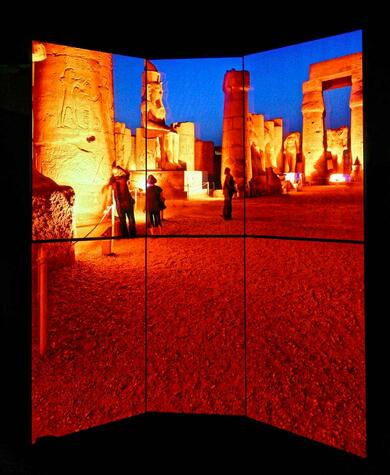 New 3-D CAVEkiosk at UC San Diego brings Cyber-Archaeology to Geisel Library New 3-D CAVEkiosk at UC San Diego brings Cyber-Archaeology to Geisel Library Cyber archaeology is a new field that recreates archaeological sites and artifacts using the latest technology. The first serious use of the technology was the recreation of King Tutankhamun’s tomb in the Valley of the Kings in ancient Thebes (modern Luxor). It is an exact replicate of the 3,245-year-old tomb. The five-year project, competed in 2014, began with making a high-resolution scan of the tomb using 3-D laser scanning systems that measured up to one hundred million points per square meter (“Tut’s Tomb: A Replica Fit for a King,” National Geographic, May 20 2014). This computer data was used to create an exact copy of the tomb by means of computerized routing machines with a resolution of less than a quarter of a millimeter, silicone molds, resin casts, flatbed digital printers. The digital images can also be used in a 3-D visualization theater. Thomas Levy, professor of anthropology and archaeology at the University of California, San Diego, says, “We’re able to walk away from an excavation with the whole archaeological site on a hard drive. With this amazing data I've collected, I can then take you into a 3-D visualization theater and we can enter the excavation. I can be in San Diego and I can get a cup of coffee and I can throw in my 3-D data set with geo-reference pics of the actual excavation, and I can walk around in it again.” (Friday Church News Notes, April 12, 2019, www.wayoflife.org, [email protected], 866-295-4143) Comments are closed.
|
Archives
February 2020
|
Ads do not imply endorsement | Policy/Terms of Service | About Us | Contact Us | © Life Work Academy, Inc.
 RSS Feed
RSS Feed

